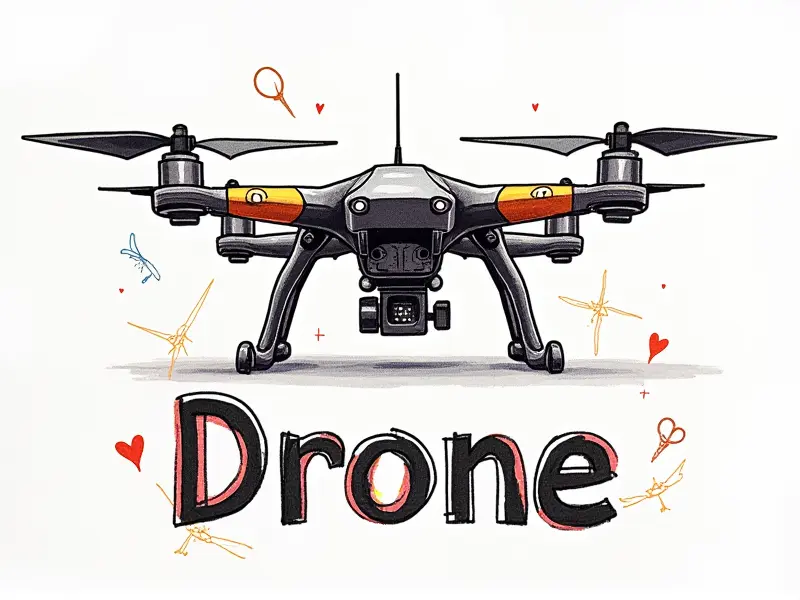Can I race with a DJI Mavic?

Can You Race With a DJI Mavic?
Racing with drones has become an increasingly popular hobby and competitive sport. Many enthusiasts wonder if the DJI Mavic series, known for its versatility and user-friendly features, can be used in FPV (First Person View) racing. This article delves into whether you can race with a DJI Mavic drone.
Is DJI Mavic Suitable for FPV Racing?
The suitability of the DJI Mavic series for FPV racing depends on several factors, including its design, performance capabilities, and features. While these drones are designed primarily for aerial photography and videography, they offer certain advantages that make them appealing to racers.
Design Considerations
- Foldability: The Mavic series is known for its compact design and foldable arms, making it easy to transport. However, this feature can be a disadvantage in terms of aerodynamics during high-speed racing.
- Battery Life: With flight times ranging from 20-30 minutes, the Mavic series offers decent endurance for short races but may fall short for longer events.
Performance Capabilities
- Speed and Agility: The DJI Mavic Pro can reach speeds of up to 45 mph (72 km/h), which is respectable but not competitive with specialized racing drones that often exceed 100 mph.
- Maneuverability: Despite its compact size, the Mavic's agility is limited compared to dedicated racing drones designed for quick turns and sharp maneuvers.
Features
- Camera Quality: The high-resolution camera on the Mavic series can provide excellent footage for FPV viewing. However, it may not be as lightweight or streamlined as specialized racing cameras.
- Flight Stability: Advanced stabilization systems and obstacle avoidance sensors are standard in the Mavic line, providing a safer flying experience but at the cost of speed.
DJI Mavic vs. Racing Drones: A Comparison
To understand whether the DJI Mavic is suitable for FPV racing, it's essential to compare its features with those of dedicated racing drones:
Speed and Performance
- Mavic Pro: Maximum speed of 45 mph (72 km/h).
- Racing Drones: Speeds often exceed 100 mph, with some models reaching up to 180 mph.
Aerodynamics and Design
- Mavic Pro: Foldable design limits aerodynamic efficiency at high speeds.
- Racing Drones: Streamlined, lightweight designs optimized for speed and agility.
Battery Life
- Mavic Pro: Flight times of 20-30 minutes.
- Racing Drones: Shorter flight times but designed for bursts of speed and quick recharges.
DJI Mavic for Racing: Pros & Cons
While the DJI Mavic series has its strengths, it also faces significant limitations when used in FPV racing scenarios. Here’s a breakdown:
Pros
- User-Friendly: Easy to set up and fly.
- Camera Quality: High-resolution camera for excellent FPV footage.
- Safety Features: Advanced obstacle avoidance and flight stability systems.
Cons
- Limited Speed: Maximum speed of 45 mph is not competitive with racing drones.
- Aerodynamics: Foldable design impacts aerodynamic performance at high speeds.
- Battery Life: Shorter flight times compared to dedicated racing drones.
Exploring the Limits of DJI Mavic in Races
While the DJI Mavic is not designed for professional FPV racing, it can still be used for recreational purposes or as a training tool. Understanding its limitations and capabilities will help you make informed decisions about using it in races.
Limits of Speed and Agility
The Mavic's top speed of 45 mph is far from the speeds achieved by racing drones, making it unsuitable for competitive events where speed and agility are crucial. However, its stability features can be beneficial during training sessions or casual races.
Flight Time Constraints
With flight times of around 20-30 minutes, the Mavic may not keep up with racing drones that have shorter but more intense flight durations. This makes it less practical for long-duration competitions.
Can You Race With Your DJI Mavic Drone?
Racing with a DJI Mavic is possible, but it’s important to set realistic expectations. The drone's design and performance capabilities make it better suited for recreational use rather than competitive racing. It can still provide an enjoyable experience and serve as a stepping stone towards more advanced FPV drones.
Is DJI Mavic Capable of Winning Races?
The chances of winning races with the DJI Mavic are slim due to its limitations in speed, agility, and aerodynamics. However, it can still be used for fun and learning purposes, helping you understand the basics of FPV racing before moving on to more competitive models.
FPV Racing with DJI Mavic: Tips & Tricks
If you decide to race with your DJI Mavic, here are some tips and tricks:
Tips for Beginners
- Start Slowly: Begin by practicing in open spaces to get comfortable with the drone's controls.
- Use Training Modes: Utilize training modes that limit speed and altitude, enhancing safety during learning phases.
Tips for Advanced Users
- Customize Settings: Adjust settings to optimize performance within the Mavic's capabilities.
- Practice Maneuvers: Focus on improving your piloting skills through repetitive practice sessions.
Can a DJI Mavic Compete in FPV Racing?
The DJI Mavic series, while versatile and user-friendly, is not designed to compete in professional FPV racing events due to its limitations in speed, agility, and aerodynamics. However, it can still be used for recreational purposes or as a training tool.
Exploring the Potential of DJI Mavic
The DJI Mavic offers an excellent entry point into the world of FPV racing, providing users with a platform to learn and enjoy the sport without the high costs associated with professional drones. Its user-friendly features make it accessible for beginners while still offering advanced capabilities for more experienced pilots.
Conclusion
While the DJI Mavic is not designed for competitive FPV racing, its versatility and ease of use make it an excellent choice for recreational purposes or as a training tool. By understanding its limitations and leveraging its strengths, you can enjoy the thrill of FPV racing while gradually transitioning to more advanced drones.

